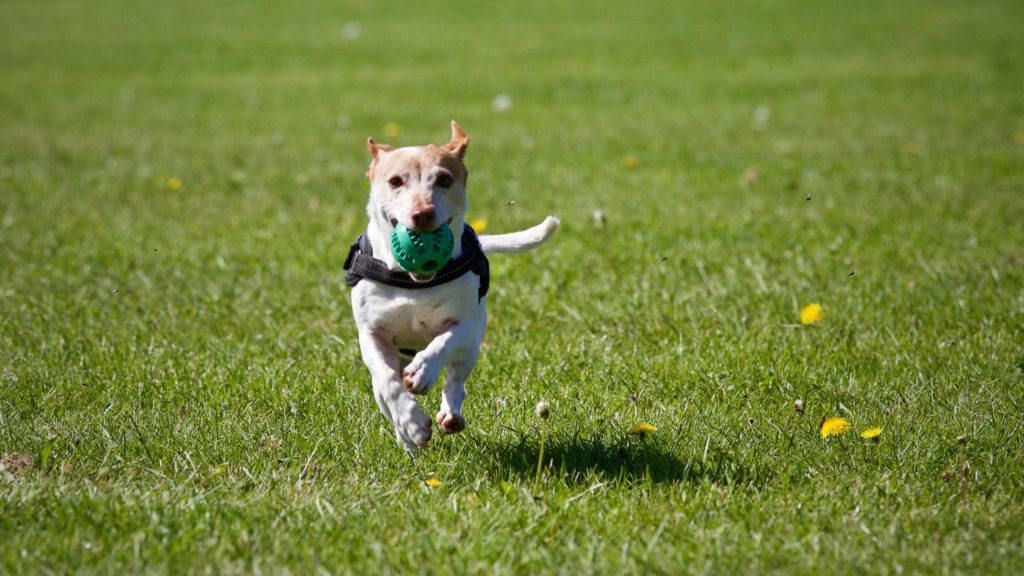Dogs and humans first formed a pack bond tens of thousands of years ago, in prehistoric times, when human culture had barely evolved much beyond our animal past. We had language, tools, and fire, but were still living as nomadic hunters, just like wild dogs.
It’s easy to imagine those early humans and domesticated wolves gathered together, with the canines sleeping around the outside providing protection. Meanwhile, in the middle, the humans have gathered around the fire and are doing something very different.
They are telling stories.
Storytelling
It’s one of those things that humans are very good at, and one of the driving forces that helped create our culture and history. Once we started writing stories down, it gave us the ability to communicate with future generations — the Bible was written starting thousands of years ago, and if I write, “To be or not to be,” almost every English speaker will immediately think of a man who was born over 450 years ago: William Shakespeare.
As far as we know, this is an ability unique to humankind. It’s how we make progress, because each new generation has access to everything that past generations discovered and recorded. Without that, we would have to constantly reinvent the wheel in a very literal sense.
That’s the positive side of storytelling. But there’s a negative side as well, and I see it all the time when I work with people and their dogs.
People will tell you the story, but a dog will tell you the truth.
People Share Stories; Dogs Tell the Truth
Because language is an abstract system to describe the real world, a lot of words automatically come along with judgments. Just look at the difference between “my dog ate my shoes” and “my dog is bad.”
While your dog eating your shoes may be a bad thing, the statement itself is neutral, and simply explains what happened. In the second statement, we have no idea what happened but have managed to create a very negative picture of the dog.
“My dog does X” is the truth. “My dog is Y” is the story.
When people focus on the story, then they are unable to see the truth of the situation. Here’s an example of the mental process.
The truth: “A large dog once bit my dog on the walk.”
The story: “A dog that was a pit bull attacked my dog, and now my dog is terrified of all dogs. Also, pit bulls are evil.”
Clinging onto the story like this means that the person doing it is clinging onto the judgment and is going to carry it around emotionally. Remember, as I wrote a while back, energy equals intention times emotion. If the story in your head is negative, your energy is going to telegraph that state of mind right to your dog, and your dog will start acting like the story is the truth as well.
In the case of an owner who is fearful because their dog was bitten once, the repetition of that story in the human’s mind will make their dog fearful of or aggressive toward all other dogs.
Living in the Moment
Now what happens if the human focuses on the truth from that past incident? It’s suddenly easier to see the truth in the present. So when that person sees another large dog on the walk, the first truth, “A large dog once bit my dog on the walk,” allows them to see the present truth: “And this is not that dog.”
This is how your dog sees things as well, although it goes a little further than that. When a dog that was bitten in the past meets a new dog, they aren’t thinking about that bite. They are living in the moment and in fact, even if they meet the dog that bit them again, they’re still thinking the same thing: “I see a dog.”
Dogs also tell the truth when you look at their behavior. The human story might be something like, “My dog is constantly peeing in the house because she’s jealous about the new baby.” The truth from the dog can be quite different: “Nobody ever told me it was wrong while I did it.”
You can’t rewrite the story until you know the truth, but you can’t know the truth until you look at it as simply and as objectively as possible. In a way, this brings us back to “to be or not to be.”
The verb “to be” functions as a powerful tool for creating a story, whether positive or negative. It becomes negative when we use the word “to be” to define one thing as another — “my dog is bad,” “my landlord is crazy,” “my spouse is angry.”
When we do this, we wind up expecting things to always remain the same, and so can never move forward and change. When a sudden change does happen, we find ourselves unprepared for it. Besides truth vs. story, you can also think of it as reality vs. expectation.
A Short Exercise
So I have an exercise for you. Look at your dog’s behavior or misbehavior, and describe it by writing it down but not using any form of the verb “to be.” It sounds difficult, I know, but I’ve just done it for these last four paragraphs except when putting phrases with “to be” in quotes. Try it, and see how your perception of your dog’s behavior — and your feelings about it — change.
Stay calm, and find the truth!











